เราจะพูดถึงเรื่องราวที่น่าสนใจเกี่ยวกับเด็กที่ไปเที่ยวสวนสัตว์ในภาษาอังกฤษ โดยจะมีการเรียกของเสียงสัตว์และการระบุสิ่งที่เด็กเห็นได้ในสวนสัตว์เพื่อช่วยเด็กเรียนภาษาอังกฤษอย่างสนุกสนาน ดูจะมากกับเรา!
รายชื่อสินค้า
เกมการจับคู่คำศัพท์ภาษาอังกฤษกับภาพของอาหารที่เด็กชอบ
หน้า 1: ภาพและคำศัพท์ 1
- ภาพ: ขนมกล้วยแห้ง
- คำศัพท์: Dried mango
หน้า 2: ภาพและคำศัพท์ 2
- ภาพ: แป้งมันสำปะหลัง
- คำศัพท์: Banana bread
หน้า 3: ภาพและคำศัพท์ 3
- ภาพ: อาหารสด
- คำศัพท์: Fresh vegetables
หน้า 4: ภาพและคำศัพท์ 4
- ภาพ: อาหารหมึก
- คำศัพท์: Shellfish
หน้า 5: ภาพและคำศัพท์ 5
- ภาพ: ขนมสาลี
- คำศัพท์: Salami
หน้า 6: ภาพและคำศัพท์ 6
- ภาพ: นมทรง
- คำศัพท์: Cheese
หน้า 7: ภาพและคำศัพท์ 7
- ภาพ: ขนมอม
- คำศัพท์: Muffin
หน้า 8: ภาพและคำศัพท์ 8
- ภาพ: แกงข่า
- คำศัพท์: Curry
หน้า 9: ภาพและคำศัพท์ 9
- ภาพ: ขนมหวาน
- คำศัพท์: Candy
หน้า 10: ภาพและคำศัพท์ 10
- ภาพ: นมสด
- คำศัพท์: Milk
หน้า 11: ตอบคำถามพิเศษ
-
คำถาม: อะไรคือ “Dried mango”?
-
ตอบ: นี่คือขนมกล้วยแห้ง
-
คำถาม: อะไรคือ “Banana bread”?
-
ตอบ: นี่คือแป้งมันสำปะหลัง
-
คำถาม: อะไรคือ “Fresh vegetables”?
-
ตอบ: นี่คืออาหารสด
-
คำถาม: อะไรคือ “Shellfish”?
-
ตอบ: นี่คืออาหารหมึก
-
คำถาม: อะไรคือ “Salami”?
-
ตอบ: นี่คือขนมสาลี
-
คำถาม: อะไรคือ “Cheese”?
-
ตอบ: นี่คือนมทรง
-
คำถาม: อะไรคือ “Muffin”?
-
ตอบ: นี่คือขนมอม
-
คำถาม: อะไรคือ “Curry”?
-
ตอบ: นี่คือแกงข่า
-
คำถาม: อะไรคือ “Candy”?
-
ตอบ: นี่คือขนมหวาน
-
คำถาม: อะไรคือ “Milk”?-
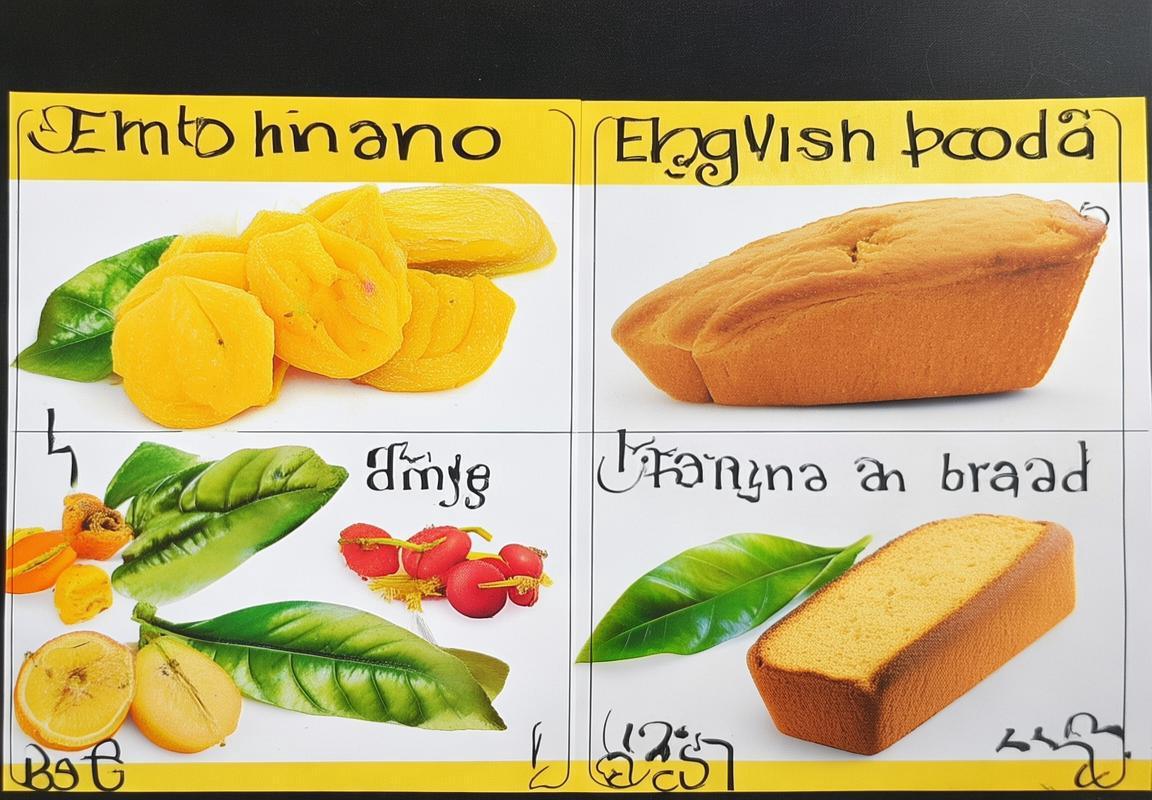
I want to buy a book about animals
ภาพสัตว์น้ำ:
- A fish
- A turtle
- A whale
- A shark
- A sea star
ภาพสถานที่:
- A beach
- A coral reef
- A submarine
- A lighthouse
- A ship
เกมการจับคู่:
- Fish – Beach
- Turtle – Coral reef
- Whale – Submarine
- Shark – Ship
- Sea star – Lighthouse
คำศัพท์ภาษาอังกฤษ:
- Fish
- Turtle
- Whale
- Shark
- Sea star
- Beach
- Coral reef
- Submarine
- Lighthouse
- Ship
ใช้ภาพสัตว์น้ำเป็นตัวช่วยในการจับคู่คำศัพท์กับสถานที่ที่พวกมันอยู่:
- ภาพปลาปรากฏบนภาพหาด
- ภาพหมดปรากฏบนภาพหาดสีแดง
- ภาพปลาวาฬปรากฏบนภาพเรือ
- ภาพปลาปรากฏบนภาพทางแหลว
- ภาพดาวินท์ปรากฏบนภาพทางแหลว
การจับคู่คำศัพท์กับสถานที่นี้ช่วยเด็กเรียนรู้ที่ที่ตั้งของสัตว์น้ำและสถานที่ที่พวกมันอาศัย.

I want a storybook with colorful pictures
I was walking through the library, my eyes scanning the shelves filled with books. Suddenly, I saw a section dedicated to children’s stories. My heart leaped with excitement as I approached it. I picked up a few books, looking for one that would catch my eye.
One book caught my attention immediately. It was a storybook with colorful pictures. The cover was vibrant, featuring a whimsical forest with friendly animals. I flipped through the pages, mesmerized by the intricate illustrations and the engaging stories.
The storybook was filled with adventures of animals living in a magical forest. The pictures were so colorful and detailed that they seemed to come to life. I was drawn to the story of a brave little fox named Max, who went on incredible journeys with his friends. The illustrations were not only beautiful but also helped me understand the story better.
I decided to take the book home, hoping it would bring joy to my little brother. I imagined him sitting on the floor, flipping through the pages, his eyes wide with wonder. I knew that this storybook would be a special addition to our collection, one that we would read over and over again.
As I walked out of the library, I felt a sense of accomplishment. I had found exactly what I was looking for—a storybook with colorful pictures that would spark the imagination of a child. I couldn’t wait to share it with my little brother and experience the magic of the stories together.
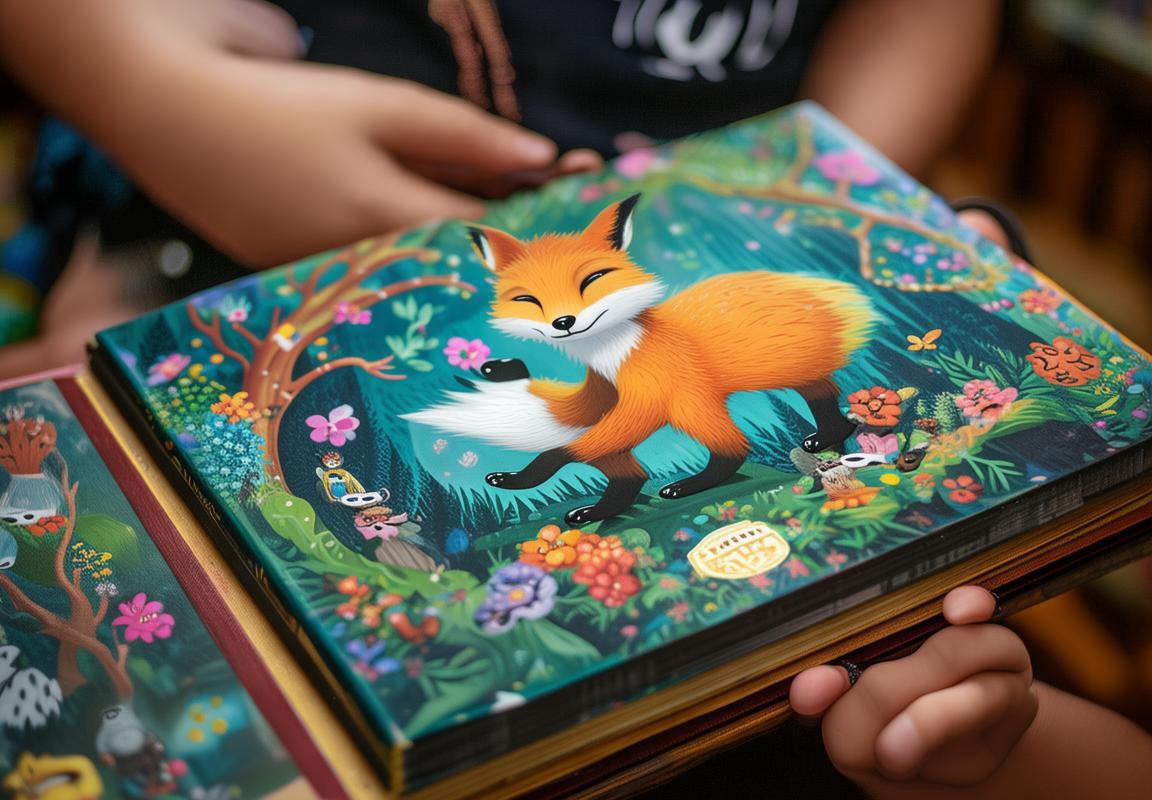
I need a book for learning English
I’m looking for something that can help me practice my English skills. I want a book that has simple sentences and pictures so I can understand easily. It should have exercises to do, so I can practice writing and speaking. I’m not looking for a big, heavy book. I need something small and light that I can carry around with me. It doesn’t have to be too expensive, just something that will help me learn English.
I think I found the perfect book! It has colorful pictures and easy-to-understand sentences. There are exercises at the end of each chapter, so I can practice what I’ve learned. It’s not too thick, and it has a cover that’s not too glossy, so it won’t get dirty easily. I can even take it to school and show it to my teacher!
I’m really excited to start learning English with this book. I can’t wait to read it and do the exercises. I think it’s going to be fun and helpful. Thanks for helping me find it!
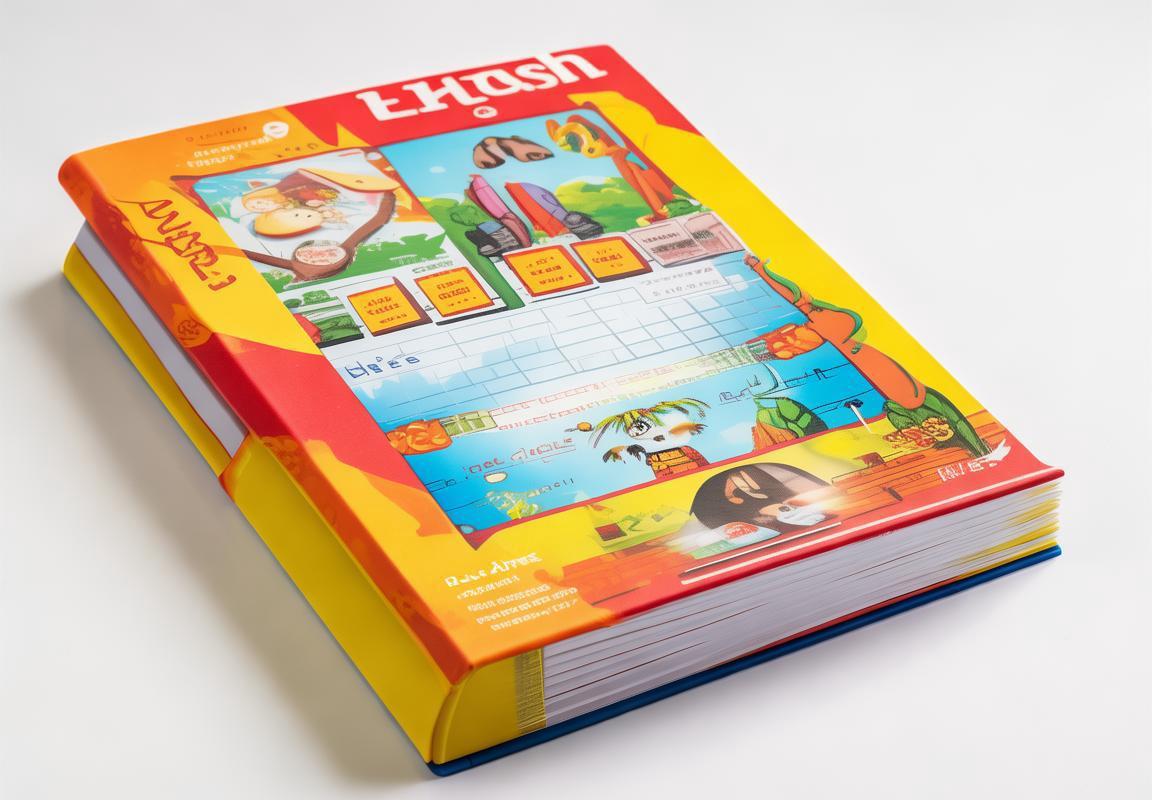
ทายคำศัพท์
เรื่องเล่าเกี่ยวกับการไปที่ทะเลในภาษาอังกฤษ
Once upon a time, there was a curious little boy named Timmy. Timmy loved adventures, and one sunny day, he decided to go on a trip to the sea. He packed his bags with his favorite toys and some snacks, and off he went!
Timmy took a bus to the seaside, and as the bus drove along, he watched the trees and houses disappear behind him. He could see the ocean in the distance, and it sparkled like a giant mirror. Timmy couldn’t wait to get there!
When he arrived at the beach, Timmy was amazed by the vastness of the sea. The waves were crashing against the shore, and the sand was soft and warm. Timmy ran along the water’s edge, leaving footprints in the sand.
He saw a seagull flying overhead, and it made a loud squawk. Timmy looked around and found a small rock. He threw the rock into the sea, and it made a splash. The seagull flew closer and pecked at the water, looking for food.
Timmy continued to explore the beach, and he found a little shell. He picked it up and put it in his pocket. He looked at the sky and saw a rainbow arching over the sea. It was a beautiful sight!
As the sun began to set, Timmy knew it was time to head home. He took a bus back to his house, and as he looked out the window, he could still see the ocean in the distance. Timmy was happy that he had had such a wonderful day at the sea.
And so, Timmy went to bed that night, feeling tired but happy. He dreamed of all the adventures he would have at the sea again. The end.
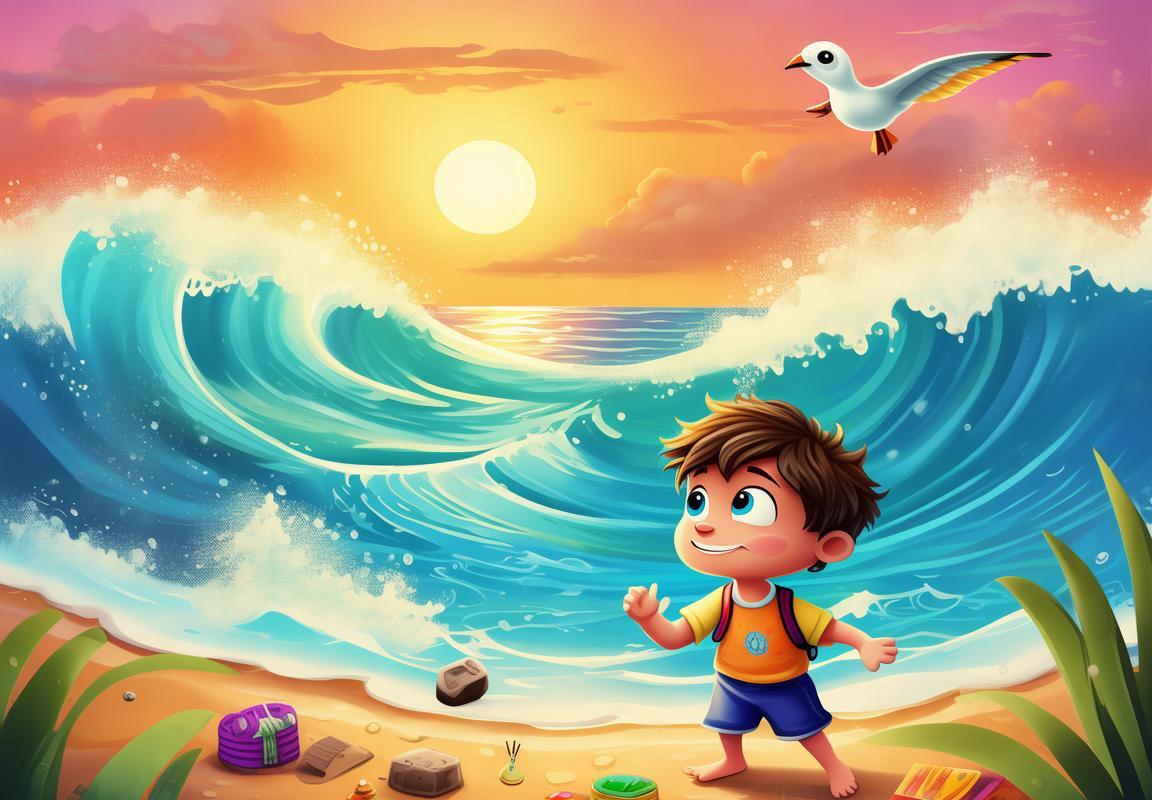
Is it “Dinosaurs: The Prehistoric Creatures”?
-
Student: Yes, that’s it! I found the book about dinosaurs from the prehistoric era. It has so many cool pictures and facts about the big, scary dinosaurs.
-
Teacher: That’s correct! “Dinosaurs: The Prehistoric Creatures” is a great choice. Do you like learning about dinosaurs?
-
Student: Absolutely! I love learning about them because they were so big and different from the animals we see today.
-
Teacher: I’m glad to hear that! Dinosaurs are fascinating creatures, and it’s a fun way to learn about the past. Do you know any interesting facts about dinosaurs?
-
Student: Yes, they had sharp teeth and huge tails. Some of them could be as long as a bus!
-
Teacher: That’s amazing! It’s great that you’re learning so much about dinosaurs. Keep exploring and reading about them. Do you think you’ll find more books about animals?
-
Student: I hope so! I love reading about animals and learning new things.,。
-
Teacher: You’re on the right track! Reading is a great way to learn about the world around us. Keep reading, and you’ll discover so many interesting things. Well done on finding the dinosaur book!
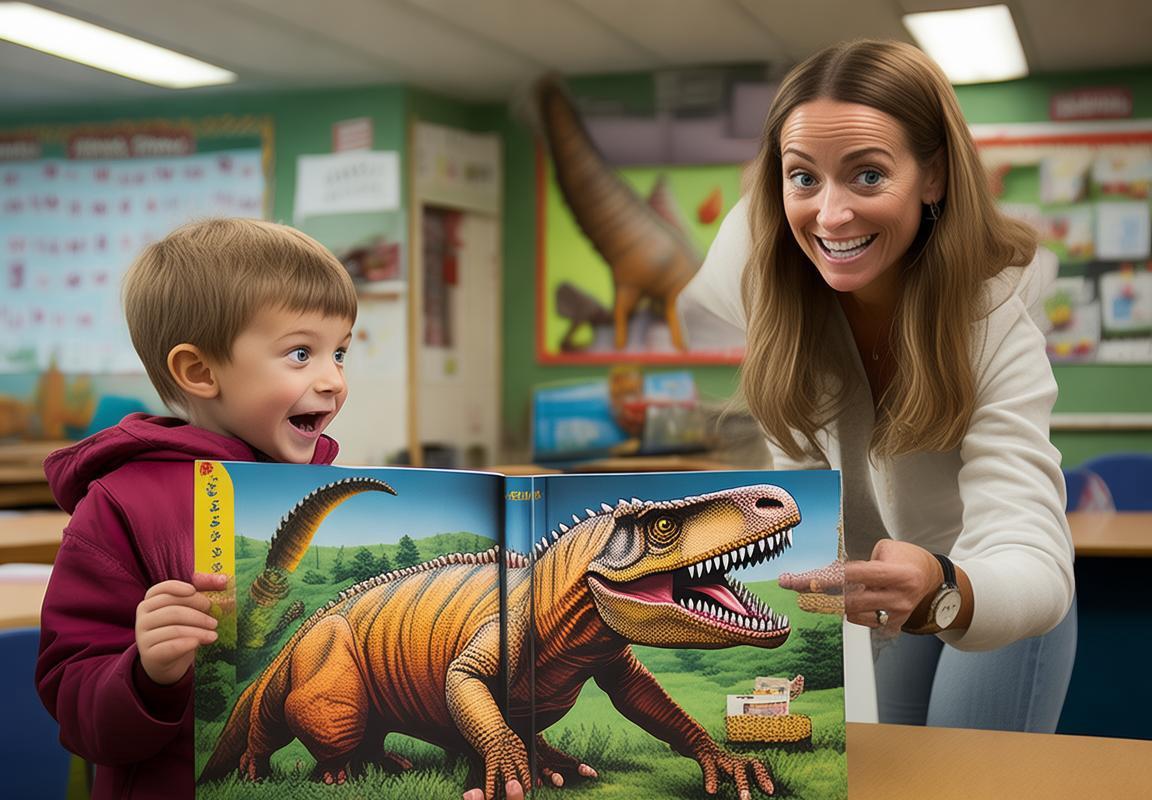
Is it “Fairies and their Magical World”?
-
Student: Yes, that’s right! It’s a story about fairies with magical powers and a world full of enchantment.
-
Teacher: Excellent! You’ve got the title right. These books are always full of adventures and wonder. Do you like reading about magical creatures?
-
Student: Yes, I love them! They make me feel like I’m in a magical world too.
-
Teacher: That’s great to hear. Now, let’s talk about the cover. Can you describe what you see on the cover of the book?
-
Student: There’s a forest with lots of colorful flowers and a sparkling river. In the middle, there are some fairies flying around with their wings shimmering in the sunlight.
-
Teacher: Beautiful! The cover of the book is a perfect representation of the story inside. It makes you want to dive into the magical world, doesn’t it?
-
Student: Absolutely! I can’t wait to read it.
-
Teacher: That’s the spirit! Remember, books are our friends and they take us on incredible journeys. Now, why don’t you show me another book about fairies and their magical adventures?
-
Student: Sure, here’s another book. It’s called “The Enchanted Forest.” The cover shows a forest with a glowing light coming from the trees, and there are fairies sitting on the branches.
-
Teacher: That sounds like a wonderful story. The cover is very captivating. It makes you feel like there’s something magical waiting to be discovered on the pages.
-
Student: I think so. I can almost hear the fairies whispering secrets to me.
-
Teacher: That’s the magic of books. They can transport you to another world. Well done, you’ve done a fantastic job identifying the title and describing the cover. Keep exploring these magical worlds through your reading adventures!
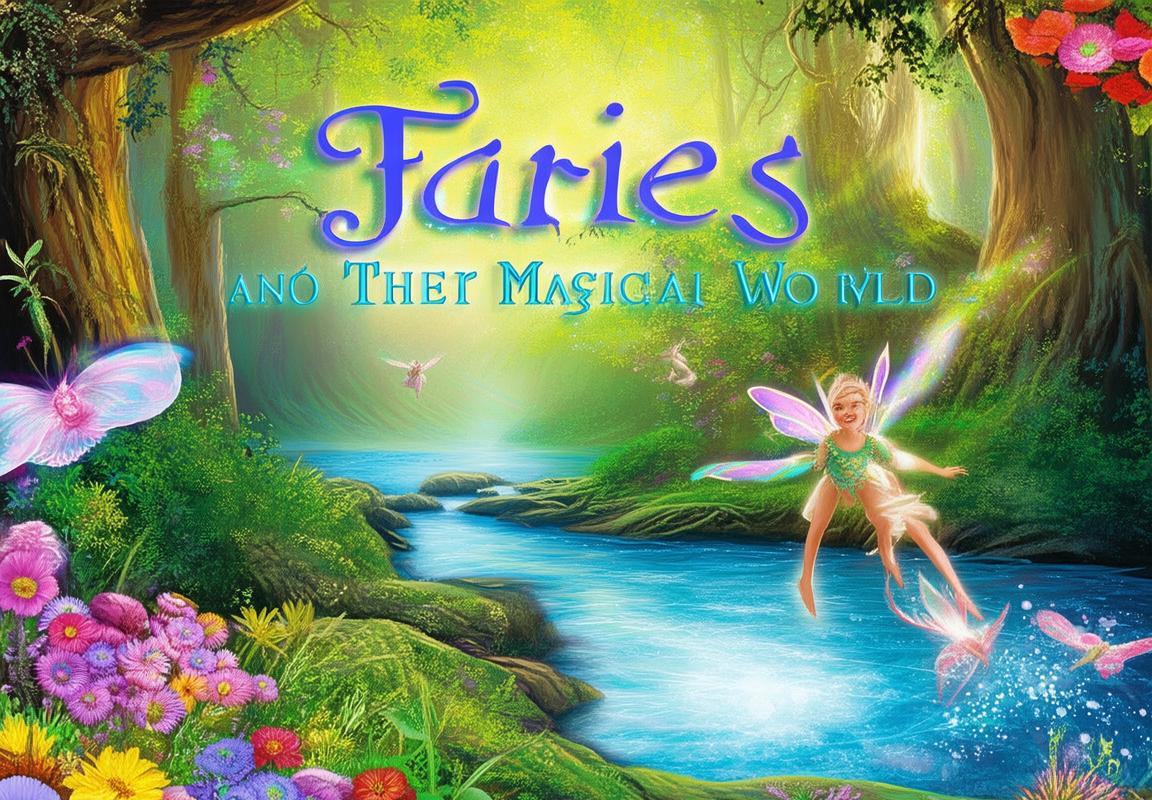
Is it “English Fun for Kids”?
“English Fun for Kids”?Is it
- Student: Yes, that’s right! “English Fun for Kids” sounds like a fun book for learning English. I can’t wait to read it!
- Teacher: Great choice! This book is perfect for you. It has lots of colorful pictures and fun activities to help you learn English.
- Student: I love books with pictures. Can we read some pages together?
- Teacher: Of course! Let’s start with the first page. It says, “Hello, my name is Bob. I like to play with my friends.” Can you read that?
- Student: Yes, I can! “Hello, my name is Bob. I like to play with my friends.”
- Teacher: Excellent! Now, let’s look at the next page. It’s a story about a dog named Max. Max likes to run in the park. Can you find the word “park”?
- Student: Yes, I found it! “Max likes to run in the park.”
- Teacher: Very good! We’re learning new words and sentences. Let’s keep reading. The next page is about a cat named Lily. Lily likes to jump on the bed. Can you find the word “bed”?
- Student: Yes, I found it! “Lily likes to jump on the bed.”
- Teacher: Great job! You’re really getting the hang of this. Let’s read the next page together. It’s about a boy named Tom. Tom likes to ride his bike. Can you find the word “bike”?
- Student: Yes, I found it! “Tom likes to ride his bike.”
- Teacher: That’s right! You’re doing fantastic. Keep reading and you’ll learn a lot of new things. Remember, practice makes perfect!
- Student: I’m going to read the rest of the book by myself. I’m excited to learn new words and stories.
- Teacher: That’s wonderful! I’m sure you’ll enjoy reading “English Fun for Kids.” Keep practicing and you’ll become an expert in English.
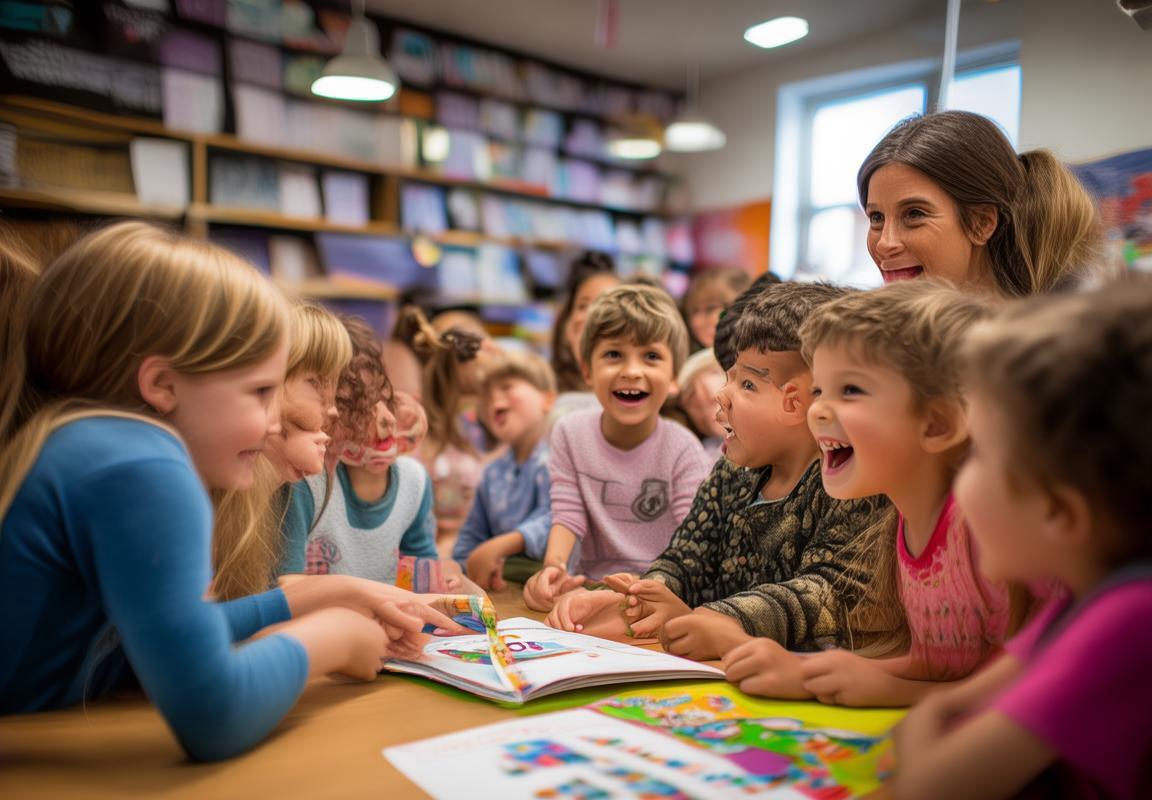
ซื้อหนังสือ
- ชายาว: คุณเลือกหนังสืออะไรที่คุณอยากซื้อแล้ว?
- เด็ก: ฉันอยากซื้อหนังสือเกี่ยวกับสัตว์เลี้ยงที่มีภาพสวย ครับ!
- ชายาว: แล้วครับ! มีหนังสือ “Animals with Beautiful Pictures” อยู่ที่นี่ คุณอยากซื้อหนังสือนี้ไหม?
- เด็ก: ใช่แล้วครับ! มีหนังสือเกี่ยวกับสัตว์ป่าไหม?
- ชายาว: ใช่แล้วครับ! มีหนังสือ “Wild Animals” ด้วย คุณอยากซื้อหนังสือนี้ไหม?
- เด็ก: ใช่แล้วครับ! อยากซื้อหนังสือเกี่ยวกับดาวและดวงจันทร์เช่นกัน ครับ!
- ชายาว: อยากซื้อหนังสือ “Stars and the Moon” นัก ครับ! มีหนังสือนี้ในหน้าหนังสือร้านเช่นกัน คุณอยากซื้อหนังสือนี้ไหม?
- เด็ก: ใช่แล้วครับ! ฉันชอบหนังสือที่มีภาพสวยมาก!
- ชายาว: ดีมากครับ! ฉันจะขายหนังสือทั้งหมดให้คุณแล้ว คุณจะจ่ายด้วยเงินสดหรือบัตรเคาน์เตอร์?
- เด็ก: ฉันจ่ายด้วยเงินสดครับ!
- ชายาว: ดีมากครับ! ฉันจะนับเงินแล้ว คุณมีเงินเพียงพอไหม?
- เด็ก: ใช่แล้วครับ! ฉันมีเงินเพียงพอ!
- ชายาว: ดีมากครับ! ฉันจะขายหนังสือให้คุณแล้ว คุณจะได้หนังสือทั้งหมดเลย ขอบคุณที่มาซื้อหนังสือที่ร้านของเรา ครับ!
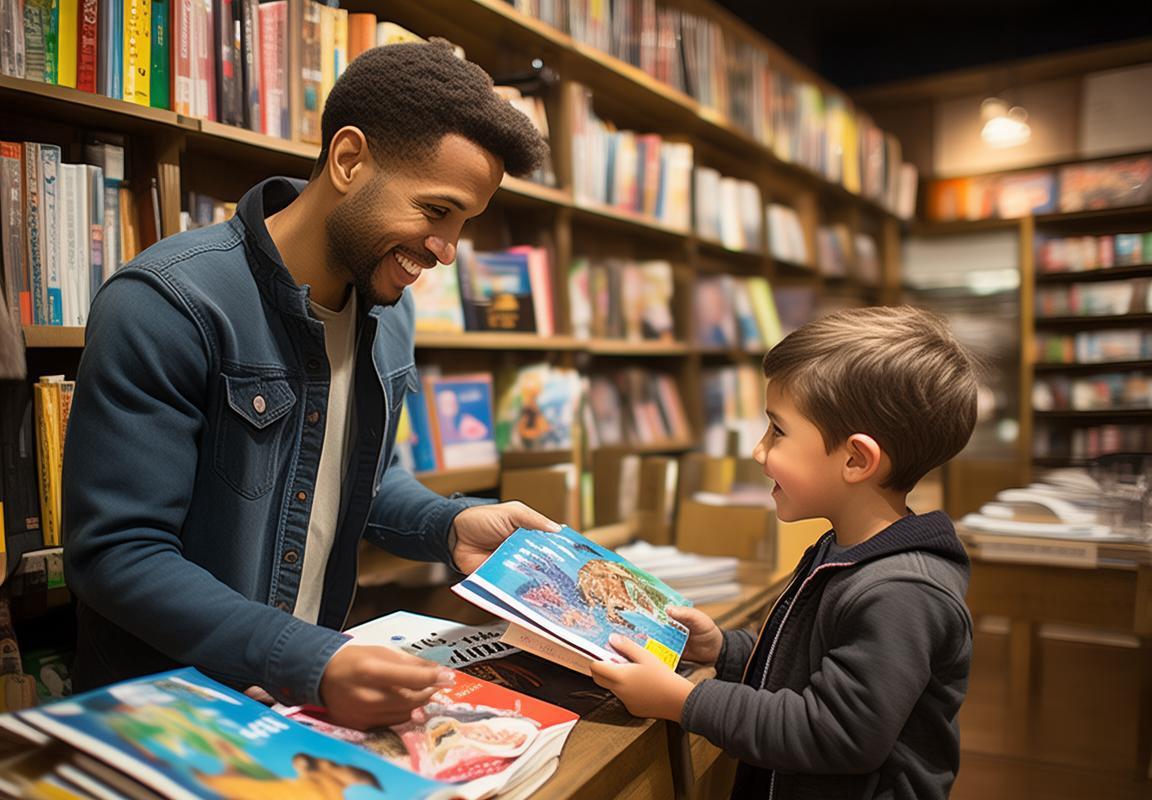
Can I have this book, please?
-
Teacher: Good morning, kids! What book do you want to read today?
-
Student: I want to read a book about animals.
-
Teacher: Okay, let’s look for a book about animals. Here it is. “Can I have this book, please?” You can say it like this: “Can I have this book, please?” Now, let’s practice saying it together.
-
Student: Can I have this book, please?
-
Teacher: That’s right! You did a great job. Now, what if you want to ask for a different book? You can say, “Can I have this book, please?” No matter which book you want, you can use this phrase to ask for it.
-
Teacher: Now, let’s try it with a few more books. If you see a book about cars, what would you say?
-
Student: Can I have this book, please?
-
Teacher: Perfect! And if you find a book about the sun, how would you ask for it?
-
Student: Can I have this book, please?
-
Teacher: Excellent! You’re getting really good at asking for books. Remember, you can use “Can I have this book, please?” for any book you want to read.
-
Teacher: Now, let’s try a different scenario. Imagine you’re at a bookstore and you see a book that you really like. How would you ask the bookstore owner for it?
-
Student: Can I have this book, please?
-
Teacher: Yes, that’s it! You can ask the bookstore owner using the same phrase. They will understand that you want to buy the book.
-
Teacher: Great! Now, let’s practice some more. If you see a book about the moon, what would you say?
-
Student: Can I have this book, please?
-
Teacher: Perfect! And if you find a book about the ocean, how would you ask for it?
-
Student: Can I have this book, please?
-
Teacher: You’re doing fantastic! You’re learning how to ask for books in a bookstore. Remember, “Can I have this book, please?” is a great phrase to use when you want to ask for something. Keep practicing, and you’ll be an expert in no time!
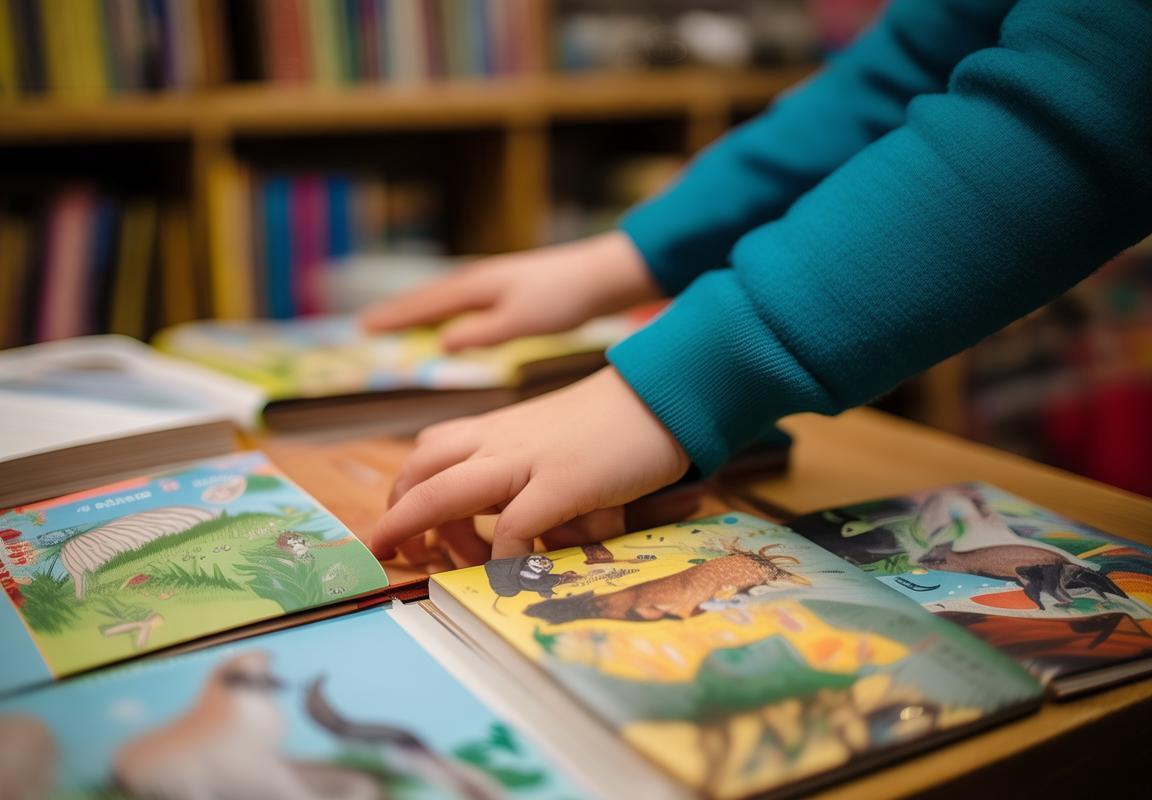
Can I buy this storybook?
- Teacher: Sure, this storybook is really cool! Do you like the pictures in it?
- Student: Yes, I do! The pictures are so colorful and fun.
- Teacher: Great! Do you want to read it with me?
- Student: Yes, please! Can I read the story out loud?
- Teacher: Of course! Let’s start with the first page. What do you see on this page?
- Student: I see a girl and a boy. They are on a farm.
- Teacher: Yes, they are. And what are they doing?
- Student: They are feeding the animals.
- Teacher: Very good! Now, let’s turn to the next page. What do you think will happen?
- Student: Maybe they will play with the animals or go for a ride on a tractor.
- Teacher: That’s a great guess! Let’s read the next page and find out. (Teacher reads the story)
- Student: Oh, the girl and the boy are going to the market to buy some groceries.
- Teacher: Exactly! They are shopping for food for their family. Do you like shopping?
- Student: Yes, I do! I like to buy my favorite fruits and vegetables.
- Teacher: That’s great! Now, let’s go back to the beginning and read the whole story together. (Teacher and student read the story together)
Teacher: Now that we’ve read the story, what do you think of it?- Student: I liked it a lot! The story was fun and the pictures were beautiful.- Teacher: I’m glad you enjoyed it. Would you like to buy this storybook?- Student: Yes, please! Can I pay with my allowance?- Teacher: Of course! You can pay with your allowance or with your pocket money.- Student: I’ll pay with my allowance. How much does it cost?- Teacher: It costs $5. Here you go, keep the change.- Student: Thank you! I can’t wait to read this story again and again.
Teacher: You did a great job reading the story and asking questions. I’m proud of you!
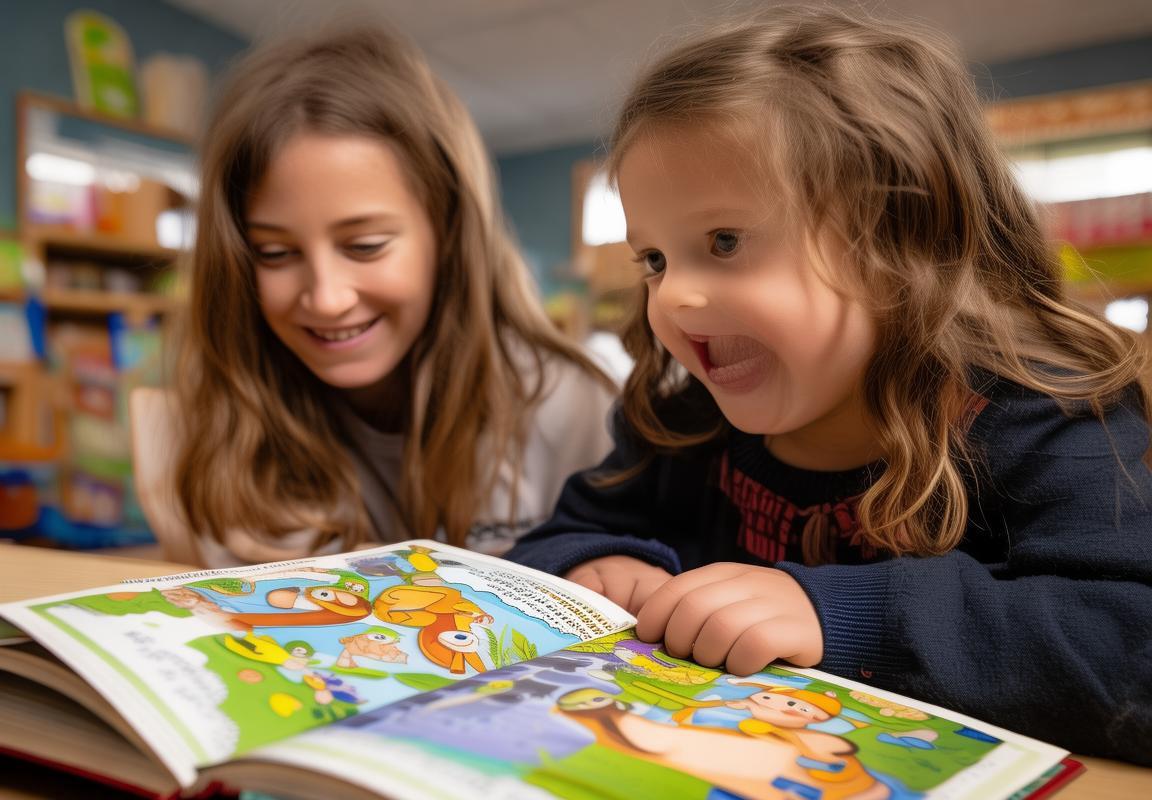
Can I purchase this English book?
- Teacher: Of course! What book are you interested in?
- Student: I want the one with the colorful pictures.
- Teacher: Ah, I see! It’s “Fairies and their Magical World.” Is that correct?
- Student: Yes, that’s it!
- Teacher: Great choice! How much is it?
- Student: How much is it?
- Teacher: It’s $5. Would you like to pay with coins or a dollar?
- Student: I’ll pay with coins.
- Teacher: Excellent! Here you go. Enjoy your new book!

Thank you
วัสดีครับส! ขอบอกครับ ที่คุณติดตามของเราที่หน้านี้ ขอบอกครับที่คุณเลือกภาษาอังกฤษเพื่อเรียกว่า “Thank you” ครับ ซึ่งก็เป็นคำที่ใช้เมื่อต้องการแสดงความขอบครับหรือขอบอกครับ ให้กับคนที่ได้ช่วยหรือให้ความให้เกียรติ
ในการใช้ภาษาอังกฤษ คำ “Thank you” มักจะถูกใช้เมื่อคุณต้องการแสดงความขอบอกครับหรือขอบอกครับให้กับคนที่ได้ช่วยหรือเจาะจงบางสิ่งที่คุณรู้สึกดี ตัวอย่างเช่น:
- Thank you for helping me. (ขอบอกครับที่คุณช่วยเหลือฉัน)
- Thank you for your kindness. (ขอบอกครับที่คุณมีความรุ้นใจ)
- Thank you for your gift. (ขอบอกครับที่คุณมอบของของ)
เมื่อคุณต้องการแสดงความขอบอกครับหรือขอบอกครับให้กับเด็ก คุณก็อาจจะพูด:
- Thank you for sharing your toys. (ขอบอกครับที่คุณเจาะจงของเล่น)
- Thank you for being a good friend. (ขอบอกครับที่คุณเป็นเพื่อนที่ดี)
- Thank you for helping me clean up. (ขอบอกครับที่คุณช่วยฉันทำความสะอาด)
การใช้ “Thank you” นั้นไม่เพียงแค่แสดงความขอบอกครับ แต่ยังเป็นการสร้างความเป็นส่วนหนึ่งของคนอื่นๆ และเพิ่มเติมความสุขสำนึกให้แก่ประชาชนที่ได้รับการช่วยเหลือด้วยเช่นกัน ซึ่งก็เป็นสิ่งที่ดีเพื่อทุกคน
ขอบอกครับที่คุณเลือกภาษาอังกฤษเพื่อพูด “Thank you” ครับ! ขอบอกครับที่คุณอยู่ที่นี่ และขอบอกครับที่คุณเลือกที่จะเรียกว่า “Thank you” ครับ!
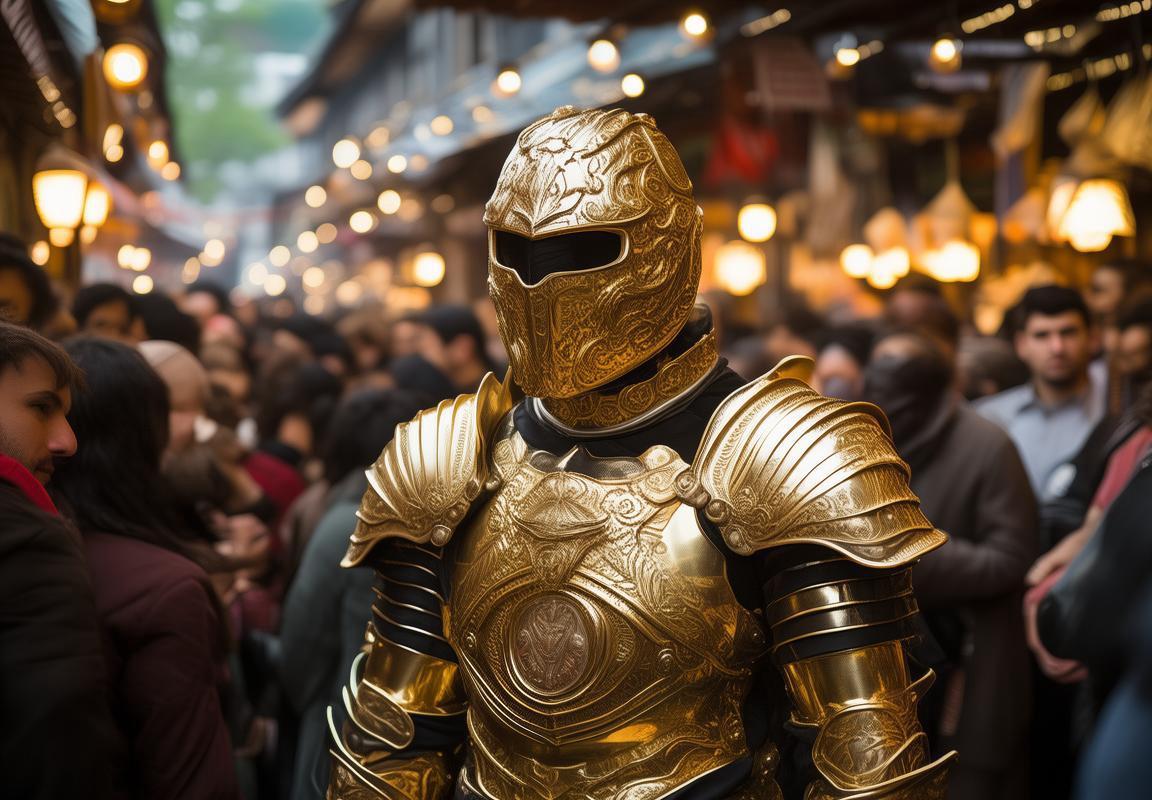
How much is it?
Teacher: Let’s see… It’s $5. You can pay with coins or a dollar.
Student: Can I have some change, please?
Teacher: Of course! Here you go. You’ve made a great purchase!
Student: Thank you!
Teacher: You’re welcome! Remember, when you go shopping, it’s important to ask how much something costs and to pay with the correct amount. Would you like to practice some more questions you can ask at the store?
Student: Yes, please!
Teacher: Great! Here’s a question: “Can I have this book, please?”
Student: Can I have this book, please?
Teacher: Excellent! Now, let’s try a different question: “How much is it?”
Student: How much is it?
Teacher: Perfect! You’re getting really good at shopping in English. Remember, always say “Thank you” when you make a purchase. Now, let’s see if you can practice some more questions.
Student: Can I have some change, please?
Teacher: Of course! Here you go. You’ve done a fantastic job!
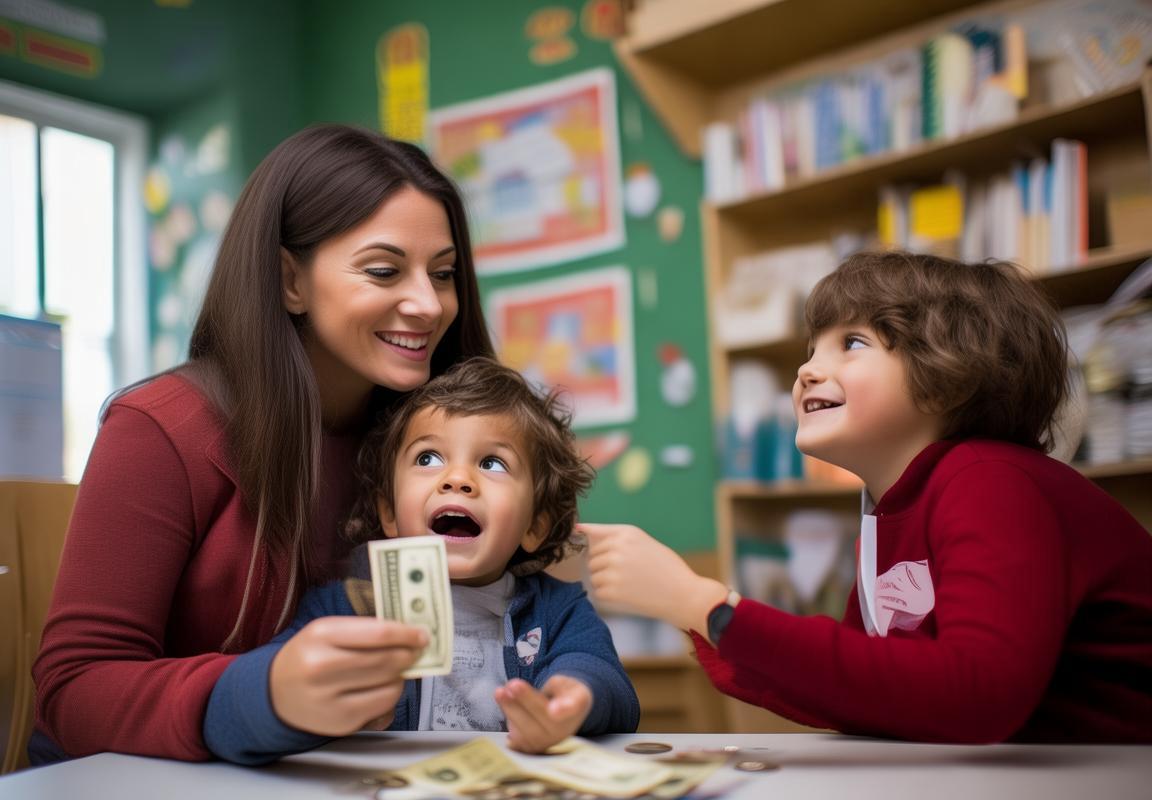
You can pay with coins or a dollar
- Teacher: Now that you’ve found the book you want, how will you pay for it?
- Student: Can I pay with coins?
- Teacher: Yes, you can. You can also pay with a dollar. Do you have any coins or a dollar?
- Student: Yes, I have some coins.
- Teacher: Great! Then you can pay for your book with these coins. Or, if you have a dollar, you can use that too.
- Student: I think I have a dollar.
- Teacher: Perfect! Now, can you give me the book so I can give you your change?
- Student: Sure, here you go.
- Teacher: Thank you. Here is your change. Enjoy your new book!
- Student: Thank you! I’m so excited to read it.
- Teacher: You’re welcome. Happy reading!
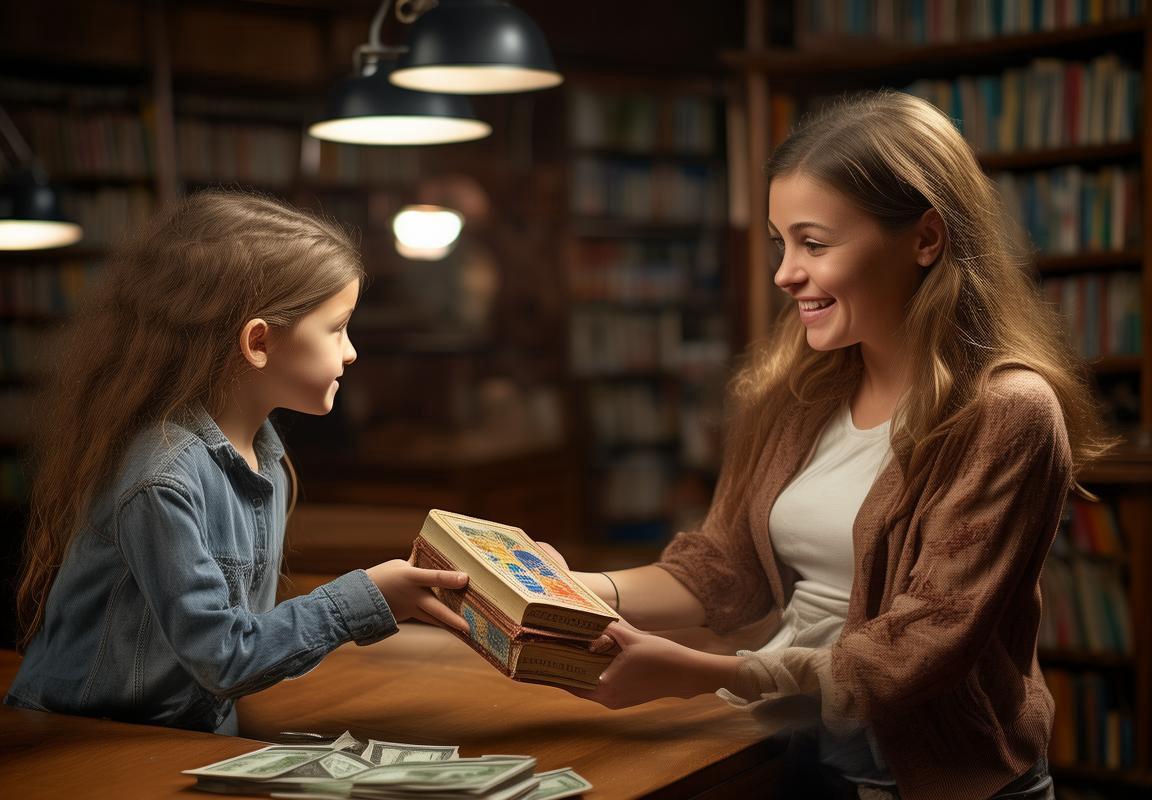
หยุดพักและประมวลผล
ารถหยุสามดพักและประมวลผลบางอย่างได้ดังนี้:
-
หยุดพัก:
-
Student: I think we’ve learned a lot today about animals and their sounds.
-
Teacher: Yes, you’ve done a great job! Let’s take a moment to rest and reflect on what we’ve learned.
-
ประมวลผล:
-
Student: I remember that a lion roars, a tiger growls, and a bear huffs.
-
Teacher: That’s correct! It’s important to remember the sounds of different animals. Now, can you tell me what sound a dog makes?
-
Student: A dog barks.
-
Teacher: Exactly! Animals have unique ways of communicating with each other. Let’s practice by making the sounds of these animals together.
-
การประมวลผล:
-
Student: I also learned about the ocean and the creatures that live there.
-
Teacher: That’s right! The ocean is home to many fascinating animals like fish, whales, and sea turtles. Can you name some of the animals we learned about today?
-
Student: We learned about the dolphin, the shark, and the clownfish.
-
Teacher: Great! You’re really paying attention. Let’s review what we’ve learned about the ocean and its animals.
-
การประมวลผล:
-
Student: I enjoyed learning about the seasons and what we can do in each one.
-
Teacher: It’s important to understand that each season has its own unique activities and weather. For example, in spring, we can plant flowers and go for walks. In summer, we can go swimming and play in the park. What do you like to do in each season?
-
Student: I like to play in the snow in winter and go on picnics in spring.
-
Teacher: That sounds like fun! It’s great to enjoy all the seasons and what they have to offer.
-
การประมวลผล:
-
Student: I also learned about transportation and how we can travel by different means.
-
Teacher: Yes, transportation is a big part of our lives. We can travel by car, train, plane, and even by boat. Each mode of transportation takes us to different places. Can you tell me what we learned about each one?
-
Student: We learned about cars, trains, planes, and boats.
-
Teacher: That’s right! Each mode of transportation has its own advantages and is used for different types of travel. It’s important to know how to use them safely.
-
การประมวลผล:
-
Student: I think we’ve learned a lot today and I’m happy with what I’ve learned.
-
Teacher: I’m glad to hear that. Learning is a journey, and every step you take is a step towards becoming more knowledgeable. Keep practicing and you’ll continue to grow in your understanding of the world around you.
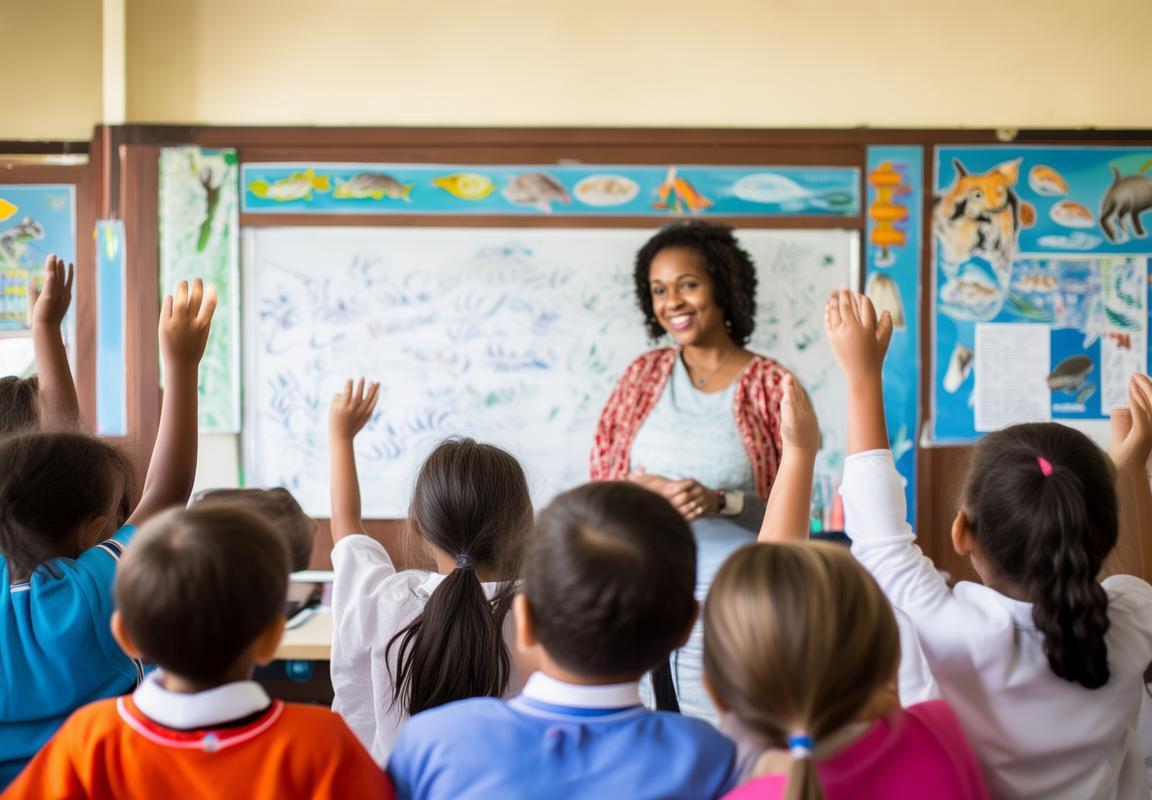
ประมวลผล
เราได้มีโอกาสเรียนรู้และเล่นต่อกันด้วยกันมากว่าสองชั่วโมงแล้วครับ และเราได้เรียนรู้อะไรทั้งหมด! เราได้เรียนรู้ภาษาอังกฤษด้วยทางต่างๆ มากมาย และเราได้เล่นเกมต่างๆ ที่ช่วยเรียนรู้ภาษาอังกฤษอีกด้วยครับ ขอบคุณที่มาเข้าร่วมกับเรา และขอบคุณที่ช่วยเรียนรู้ด้วยกัน! ขอเจอกันอีกครั้งในสัปดาห์หน้าครับ!
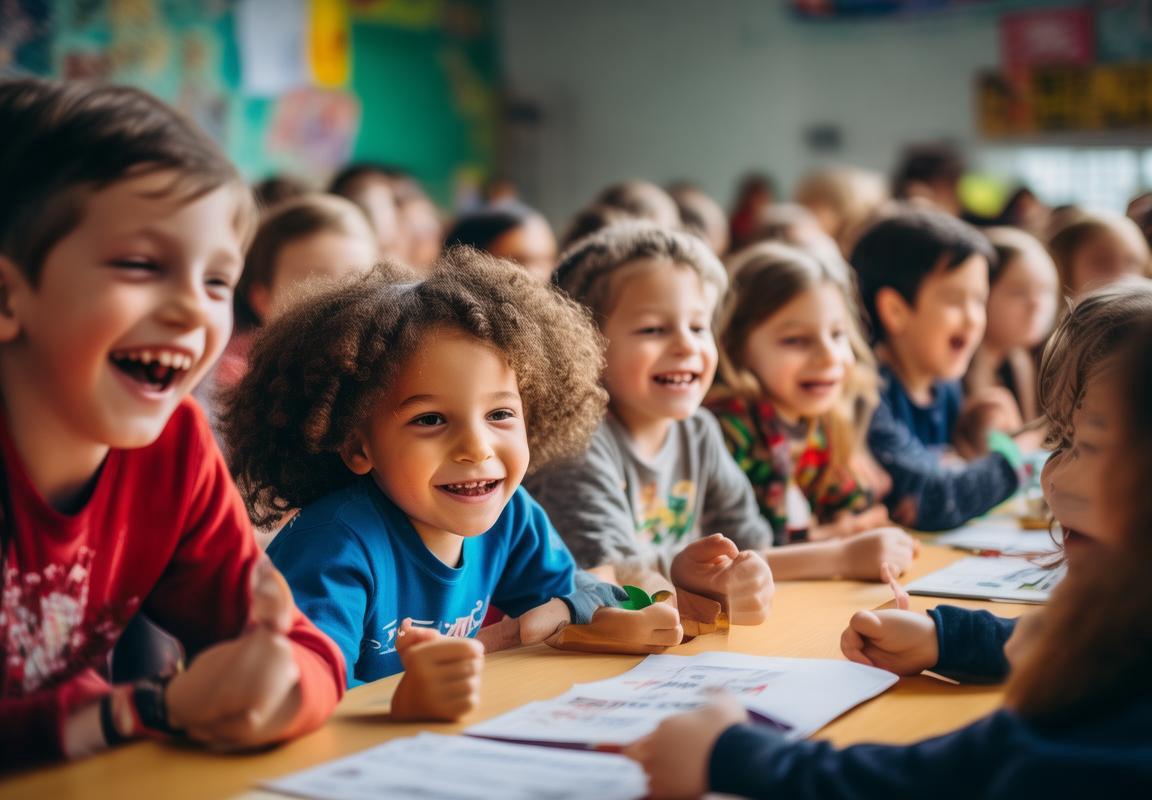
Thank you!
อบอกดฉันข้วยความยินดีที่ทุกคนได้มีช่วงเวลาสนุกกับการเล่นและเรียนรู้ภาษาอังกฤษ! ในขณะที่เราสิ้นสุดสิ่งที่เราได้ทำเมื่อนี้ ฉันต้องการขอบอกคำขอบอกของฉันกับทุกคนที่เข้าร่วม! อย่างแรก ฉันอยากขอบอกคำขอบอกกับทุกคนที่ได้มีส่วนร่วมในเกมและที่ได้เรียนรู้สิ่งใหม่ๆ แล้ว! คุณทำได้ดีมากเลย!
แล้วครับ ฉันยังอยากขอบอกคำขอบอกกับพวกที่ได้ช่วยให้เรื่องราวเล่นของเรานี้เป็นสิ่งที่น่าสนุกและน่าจำใจ! คุณทำได้ดีมากเลยที่จะช่วยให้เด็กๆ แต่ละคนรู้ภาษาอังกฤษด้วยวิธีที่สนุกสนาน! ขอบอกคำขอบอกของฉันกับคุณทุกคนที่เข้าร่วมในการเรียนและเล่น!
ฉันยังอยากขอบอกคำขอบอกกับคนที่ได้ทำงานร่วมกันและช่วยให้เรื่องราวเล่นนี้มีความสำคัญ! คุณทำได้ดีมากเลยที่จะช่วยเปิดโอกาสให้เด็กๆ ได้เรียนรู้ภาษาอังกฤษด้วยวิธีที่เหมาะสมกับวัยของพวกเขา! ขอบอกคำขอบอกของฉันกับคุณทุกคนที่มีส่วนร่วมในการนำเสนอเรื่องราวเล่นนี้!
สุดท้าย ฉันต้องการขอบอกคำขอบอกกับทุกคนที่มาเยี่ยมเยียนเรื่องราวเล่นนี้! คุณทำได้ดีมากเลยที่จะมาเยี่ยมเยียนและช่วยให้เด็กๆ ได้มีโอกาสเล่นและเรียนรู้ภาษาอังกฤษ! ขอบอกคำขอบอกของฉันกับคุณทุกคนที่มาเยี่ยมเยียน!
ขอบอกคำขอบอกของฉันกับทุกคนที่มีส่วนร่วมในการสร้างเรื่องราวเล่นนี้! คุณทำได้ดีมากเลยที่จะช่วยให้เด็ก
